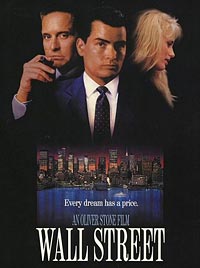That and $700 Billion Will Buy You a Bailout
 “This is a hole in the dike and it threatens to injure the safety and soundness of our banking system. It’s alarming to believe that the Fed, usually the great defender of the banking system, is now leading the deregulatory charge.”
“This is a hole in the dike and it threatens to injure the safety and soundness of our banking system. It’s alarming to believe that the Fed, usually the great defender of the banking system, is now leading the deregulatory charge.”
And so, like Babe Ruth pointing the bat towards right field, Chuck Schumer — then a Brooklyn congressman — called the catastrophe that would unfold twenty years later.
The year was 1987, and the occasion was a major Federal Reserve vote that loosened Depression-era restrictions on banks — notably, allowing them to begin underwriting those mortgage-backed securities we’ve heard so much about lately. The 1933 Glass-Steagall Act wouldn’t fall for another dozen years, but this was the beginning of the end.
The Reaganomic argument of the day was that while FDR may have saved capitalism from itself, 1930s protections had been rendered quaint by 1980s conditions, that we needed to take off the leash so American financial oligopolies could compete with oligopolies overseas.
And besides, the Cassandras fearing unimaginable calamities like trillion-dollar bailouts had failed to recognize that the financial system was all grown up now. Thomas Theobald, vice chairman of Citicorp, offered three “outside checks” on market misbehavior:
- “a very effective” SEC
- knowledgeable investors
- “very sophisticated” rating agencies
Give him credit — that’s three for three in naming the most cited failures underlying the current meltdown.
Missing from the conversation that long ago spring was any reference to Gordon Gekko or “Greed is Good,” but that’s only because of a technicality — Wall Street didn’t premiere until December. The movie’s tagline: “Every dream has a price.”
Bank Curb Eased in Volcker Defeat [NYT, May 1, 1987]
The Long Demise of Glass-Steagall [Frontline, 2003]
MANCHUCANDIDATE • Weeping Angel Imagine going from hope to Fascism in less than two decades enabled by greedy ass (millionaire)…
NOJO • Nightmare at the Museum From the last time he threatened to bomb Iran, 2020. Remember that one? All a misty blur now.
NOJO • TRUMP TARIFFS UNLEASHING FURY OF CANADIANS - AND THEIR LEGENDARY SNIPERS! @ManchuCandidate: I have birthright citizenship in Cascadia, so I think I’m good.
MANCHUCANDIDATE • TRUMP TARIFFS UNLEASHING FURY OF CANADIANS - AND THEIR LEGENDARY SNIPERS! @nojo: Only the sane parts... like the West coast, New England (minus the Bruins and…
NOJO • TRUMP TARIFFS UNLEASHING FURY OF CANADIANS - AND THEIR LEGENDARY SNIPERS! @ManchuCandidate: So, can you guys annex us now?
MANCHUCANDIDATE • TRUMP TARIFFS UNLEASHING FURY OF CANADIANS - AND THEIR LEGENDARY SNIPERS! PP is done. 51st state, my ass.
NOJO • TRUMP TARIFFS UNLEASHING FURY OF CANADIANS - AND THEIR LEGENDARY SNIPERS! @FlyingChainSaw: No, but my government was.
FLYINGCHAINSAW • TRUMP TARIFFS UNLEASHING FURY OF CANADIANS - AND THEIR LEGENDARY SNIPERS! @nojo: Were you kidnapped?
NOJO • TRUMP TARIFFS UNLEASHING FURY OF CANADIANS - AND THEIR LEGENDARY SNIPERS! @FlyingChainSaw: I’ve spent the past five weeks looking like Astronaut Dave going through the…
FLYINGCHAINSAW • TRUMP TARIFFS UNLEASHING FURY OF CANADIANS - AND THEIR LEGENDARY SNIPERS! NOJO - HOW COME WE'RE NOT COVERING KRASNOV?